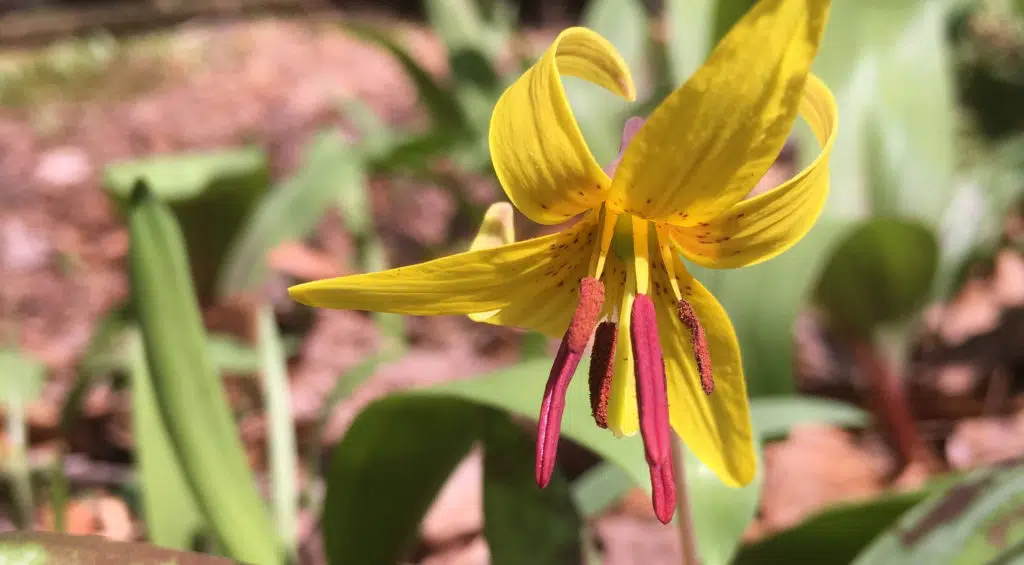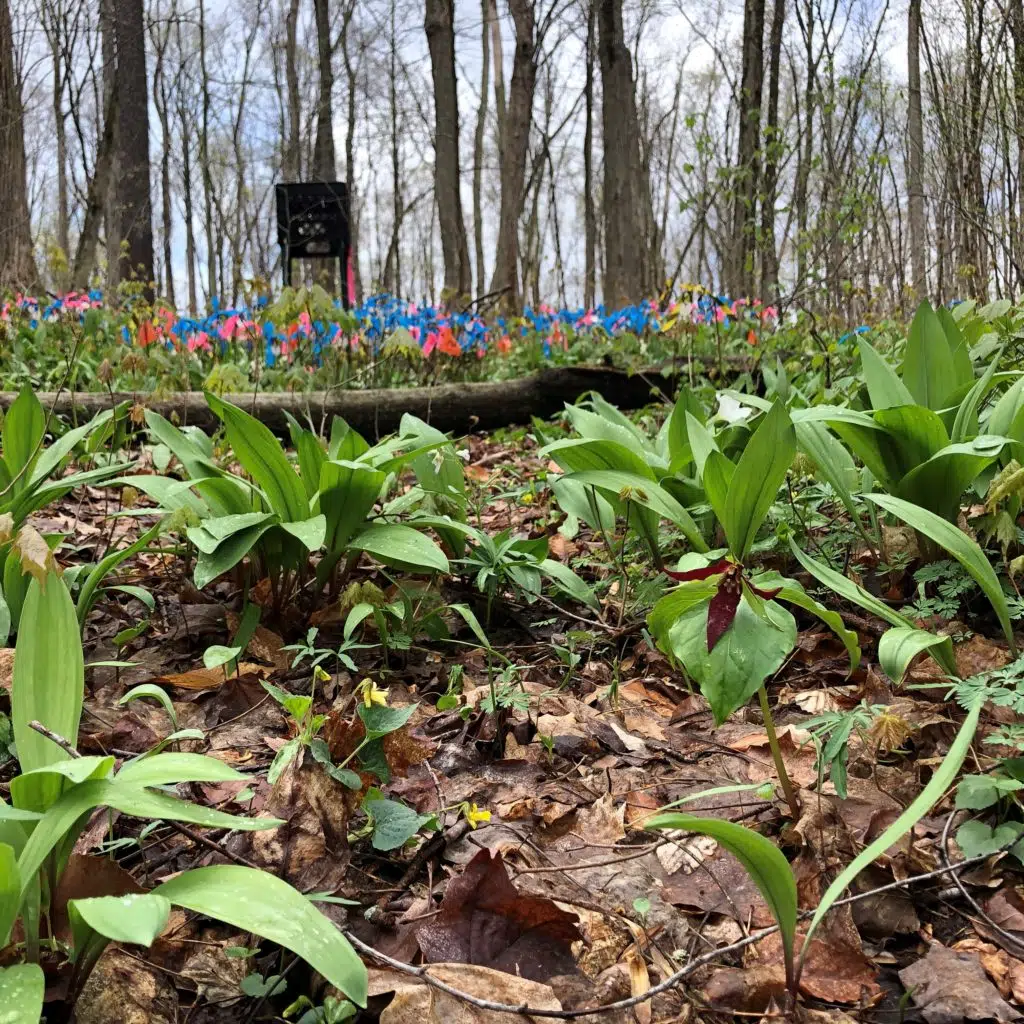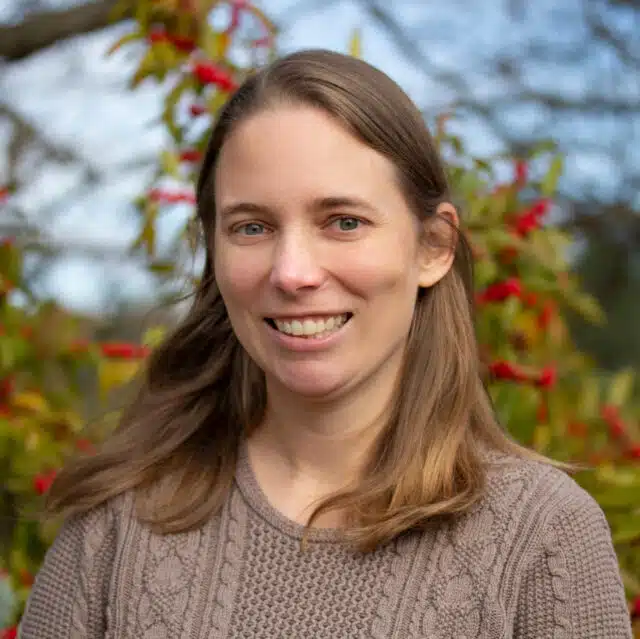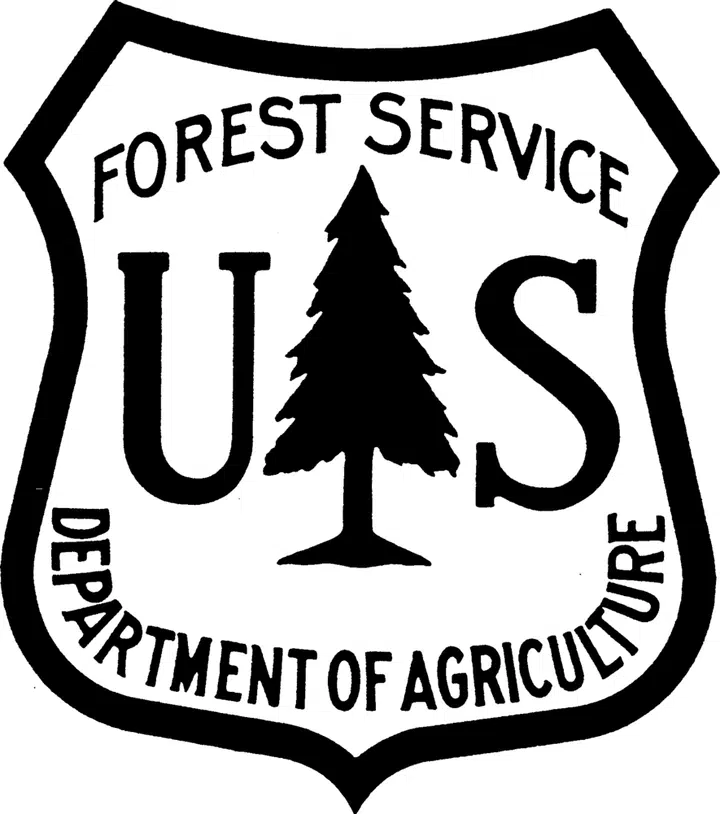Phenology
at Holden Forests & Gardens

Holden scientists are uncovering how climate change is disrupting the seasonal rhythms of plants and ecosystems.
What happens when spring comes too early, or flowers bloom before their pollinators arrive? At Holden, scientists are studying the changing seasons to uncover how global warming is disrupting nature’s delicate timing.
What Is Phenology?
Phenology is the study of seasonal, cyclical natural phenomena. For plants, this involves tracking life cycle stages like leaf-out, flowering, and fruiting—events closely tied to temperature cues. Even small climate shifts can throw off this timing, with ripple effects across ecosystems.
When and how long plants spend in each stage matters, for both them and the species that rely on them. For example, a mistimed bloom can mean a missed chance for pollination, disrupting reproduction for the plant and meal time for the pollinator.
At HF&G’s Long Center for Plant & Environmental Science, researchers are studying how global warming affects plant phenology. Their findings will equip conservationists to develop strategies to support biodiversity and ecosystem stability in a changing climate.

Using Spring Ephemerals to Study Impacts of Climate Change
At HF&G, researchers focus on spring ephemerals—a unique group of native wildflowers—to understand how global warming affects plant phenology. These plants complete their entire above-ground lifecycle in a short window each year, emerging after the snow melts and setting seed before trees leaf out and shade the forest floor.
For nearly a decade, Holden scientists have tracked the emergence, flowering, and fruiting of ephemerals like trillium, trout lilies, and Dutchman’s breeches in the Arboretum’s Bole Woods. This long-term dataset helps reveal how shifting temperatures and changing canopy cover impact their life cycles. 2025 marks the 8th year of this research.
Spring ephemerals in Holden’s Wildflower Garden were also recently part of a nationwide study comparing wildflower phenology across public gardens from Chicago to Alabama. This study found that warmer-than-average early-season temperatures led to shortened budding and fruiting phases for a number of species.

From the Get Growing Blog
For a deeper dive into our phenology research, explore these recent blog posts from Holden scientists and science writers:
How Nonnative Plants Respond to Climate Change: Holden Arboretum Researchers Report
By Anna Funk | February 26, 2025
Scientists agree: Global warming is real, and it’s happening today. Here in northeast Ohio, we can most clearly see the signs during spells of too-warm-too-early weather in the spring or in stronger-than-average storm fronts. The plants feel it, too—plants depend on temperature cues for the progression of their annual life… Keep reading.
Seedling Scramble: How Warming Changes Plant Communities
By Anna Funk | January 16, 2025
Our world is warming, and how exactly that will affect our ecosystems is a critical question. As the climate shifts, plants and animals are already responding in some obvious ways—like your daffodils blooming a bit earlier each spring—but the finer details are still unfolding. This timing of natural events, known… Keep reading.
Holden’s Wildflower Garden Is a Living Laboratory for Climate Change Research—Here’s What Our Researchers Have Learned
By Anna Funk | January 8, 2025
Public gardens like the Holden Arboretum and the Cleveland Botanical Garden are great places to visit. But patrons exploring the latest Frost event might miss that behind the scenes, these places are also research institutions, where staff biologists study plants all around the world—and sometimes, right outside their doors. The… Keep reading.
Analyzing Wildflower Phenology Across Botanical Gardens
By Chelsea Miller | July 28, 2023
In addition to being beautiful public greenspaces, botanical gardens and arboreta house valuable biological information. These living museums present a unique opportunity for scientists in the form of ready-made experimental playgrounds. That’s how Holden Forests & Gardens Scientist Dr. Katie Stuble and I approached our latest project. As community ecologists… Keep reading.
Effects of Climate Warming on Forest Plants
June 6, 2023
Each year at the Holden Arboretum, volunteers team up with members of the Stuble lab to survey spring ephemeral wildflower phenology. Phenology is the study of the timing of life history events like emergence, flowering, and seed production. We track spring ephemerals common to Northeast Ohio like trout lily, trillium… Keep reading.
Forest Wildflowers and their Overstory Trees Are Changing with Climate, But Not Always Keeping Pace
By Anna Funk | April 27, 2023
For spring ephemerals, timing is everything. These special wildflowers grow in temperate forests around the world, early in spring before the trees leaf out. Come out too early and it’s still winter, too late and it’s too shady under the forest canopy. But our world is changing, and its plant… Keep reading.
Behind-the-Scenes Spring Phenology Monitoring
By Emma Dawson-Glass | April 7, 2022
Spring is underway here in Northeast Ohio, meaning it’s time for the Stuble lab and our team of wonderful volunteers to get out in Bole Woods and start monitoring spring phenology. For those unfamiliar, phenology is the study of the timing of natural phenomena as it relates to seasonal changes… Keep reading.
Meet our Phenology Experts

Get Involved
Want to be part of our research? Volunteer with Holden’s phenology team to help track seasonal changes in our forests and gardens. Visit our volunteer page to learn more, or reach out to Dr. Katie Stuble to inquire about open research positions.
Stay up to date on our latest phenology discoveries: Subscribe to The Lab & Field, Holden Forests & Gardens’ science and conservation newsletter.
Contact Holden Forests & Gardens
Media please contact:
Stacey Vaselaney
slvaselaney@slvpr.com
(216)905-0908
Holden Forests & Gardens is made up of two of Northeast Ohio’s most important environmental and cultural institutions—the Holden Arboretum and Cleveland Botanical Garden—whose mission is to connect people with the wonder, beauty, and value of trees and plants, to inspire action for healthy communities. One of the largest public gardens in the country, Holden Forests & Gardens has over 22,000 member households and an annual attendance of over 300,000 for whom we strive to provide inspirational and educational visitor experiences. Holden’s science, conservation, and urban forestry work is widely acclaimed and helping to save native trees in the Great Lakes region and beyond.




